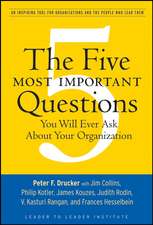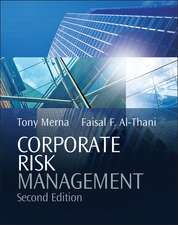Modelling of Environmental Chemical Exposure and Risk: NATO Science Series: IV:, cartea 2
Editat de Jan B.H.J. Lindersen Limba Engleză Hardback – 31 ian 2001
The present book treats the theme of modelling chemical exposure and risk in terms of four main topics: model characteristics, applications, comparison of estimated with measured concentrations, and modelling credibility.
| Toate formatele și edițiile | Preț | Express |
|---|---|---|
| Paperback (1) | 641.71 lei 6-8 săpt. | |
| SPRINGER NETHERLANDS – 31 ian 2001 | 641.71 lei 6-8 săpt. | |
| Hardback (1) | 646.43 lei 6-8 săpt. | |
| SPRINGER NETHERLANDS – 31 ian 2001 | 646.43 lei 6-8 săpt. |
Din seria NATO Science Series: IV:
- 18%
 Preț: 1225.94 lei
Preț: 1225.94 lei - 15%
 Preț: 640.06 lei
Preț: 640.06 lei - 18%
 Preț: 953.65 lei
Preț: 953.65 lei - 18%
 Preț: 950.84 lei
Preț: 950.84 lei - 18%
 Preț: 950.96 lei
Preț: 950.96 lei - 18%
 Preț: 948.61 lei
Preț: 948.61 lei - 18%
 Preț: 945.92 lei
Preț: 945.92 lei - 15%
 Preț: 644.63 lei
Preț: 644.63 lei - 18%
 Preț: 945.92 lei
Preț: 945.92 lei -
 Preț: 402.56 lei
Preț: 402.56 lei - 18%
 Preț: 1229.91 lei
Preț: 1229.91 lei - 15%
 Preț: 647.08 lei
Preț: 647.08 lei -
 Preț: 394.51 lei
Preț: 394.51 lei - 18%
 Preț: 1230.21 lei
Preț: 1230.21 lei - 15%
 Preț: 657.57 lei
Preț: 657.57 lei - 18%
 Preț: 1835.83 lei
Preț: 1835.83 lei - 18%
 Preț: 1825.12 lei
Preț: 1825.12 lei - 18%
 Preț: 958.73 lei
Preț: 958.73 lei - 18%
 Preț: 951.29 lei
Preț: 951.29 lei - 18%
 Preț: 944.51 lei
Preț: 944.51 lei - 18%
 Preț: 1015.55 lei
Preț: 1015.55 lei - 15%
 Preț: 647.08 lei
Preț: 647.08 lei - 18%
 Preț: 1827.80 lei
Preț: 1827.80 lei - 18%
 Preț: 1835.53 lei
Preț: 1835.53 lei -
 Preț: 395.63 lei
Preț: 395.63 lei - 18%
 Preț: 944.99 lei
Preț: 944.99 lei
Preț: 646.43 lei
Preț vechi: 760.50 lei
-15% Nou
Puncte Express: 970
Preț estimativ în valută:
123.72€ • 128.66$ • 103.53£
123.72€ • 128.66$ • 103.53£
Carte tipărită la comandă
Livrare economică 15-29 martie
Preluare comenzi: 021 569.72.76
Specificații
ISBN-13: 9780792367758
ISBN-10: 0792367758
Pagini: 275
Ilustrații: XIII, 275 p. 52 illus.
Dimensiuni: 155 x 235 x 18 mm
Greutate: 0.59 kg
Ediția:2001
Editura: SPRINGER NETHERLANDS
Colecția Springer
Seria NATO Science Series: IV:
Locul publicării:Dordrecht, Netherlands
ISBN-10: 0792367758
Pagini: 275
Ilustrații: XIII, 275 p. 52 illus.
Dimensiuni: 155 x 235 x 18 mm
Greutate: 0.59 kg
Ediția:2001
Editura: SPRINGER NETHERLANDS
Colecția Springer
Seria NATO Science Series: IV:
Locul publicării:Dordrecht, Netherlands
Public țintă
ResearchCuprins
Lectures.- Pesticide Fate Models and their use. FOCUS Activities.- Models used in the USA for the Evaluation of Pesticide Exposure, Hazard and Risk Assessment.- Quality assurance in environmental modelling.- Possible approaches for pesticides environmental impact management.- Pesticide leaching modelling validation A Recent European Experience.- Evaporation of pure liquids from open surfaces.- Application of USES for estimation of PEC of pesticides and hazard assessment for aquatic environment.- Modelling of operator exposure.- Use of alarm model in accidental pollution of Danube River Case study..- Results of the use of two environmental models for pesticides ranking by hazard.- Recent developments in environmental modelling at Trent University, Canada.- MACRO: a preferential flow model to simulate pesticide leaching and movement to drains.- A scientific and technological framework for evaluating comparative risk in ecological risk assessments.- Comparing two alternative pollutant dispersion models and actual data within an environmental health information Processing System (EHIPS).- RBCA Toolkit: Comprehensive Risk-based modelling system for soil and groundwater clean-up.- Danish EPA use of models for assessment of pesticides mobility.- An optimization model for the control of regional air quality in Europe.- Spatial refinement of regional exposure assessment.- COUNTRY REPORTS.- The future of the environmental modeling in risk assessment in Slovenia Country Report.- Environmental Exposure of Plant Protection Products Portuguese Experience.- Environmental Cleanup Program in Hungary Hungarian Report.- Modelling Experiences in the Slovak Republic Country Report.- Dojransko Ezero (Dojran Lake) Program 1999–2001.- Some Methodological Aspects of Soil Data Receiving AndUse for the Environmental Prognosis Country Report.- Risk Assessment and Risk Management of Industrial Chemicals in Poland Country Report.- Modelling of Environmental Chemical Pollution and Perspectives of Exposure and Risk Assessment In Ukraine National report.- Overview on Environmental Situation in Albania and Some Issues in the Field of “Modelling” Albanian experience.- Conclusions and Recommendations.










